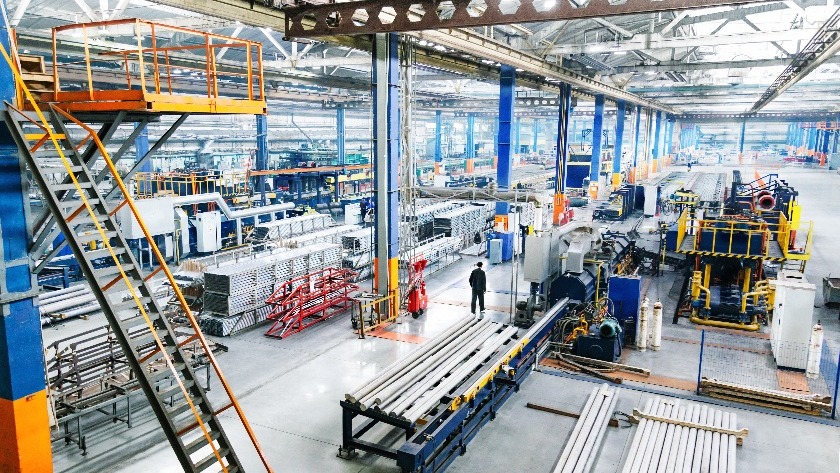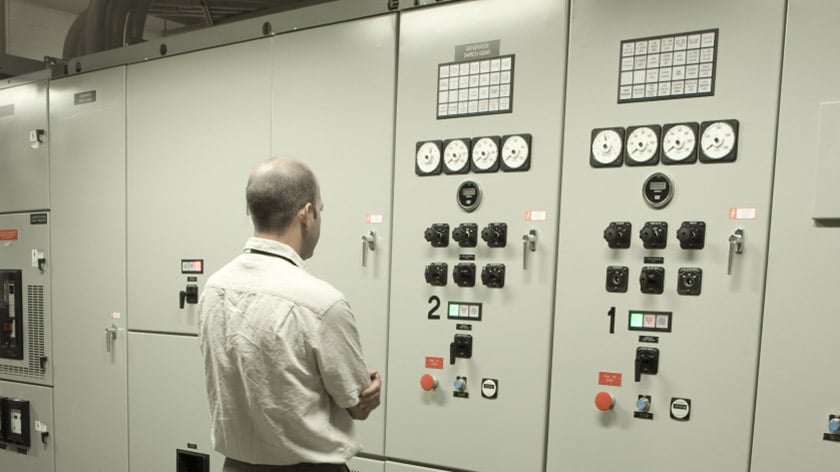Smart Monitoring Solutions for Smart Manufacturing
In manufacturing, efficiency is the name of the game. Factory operators seeking to maximize production uptime and reduce costs need precise data...
4 min read
![]() Packet Power Team
:
Nov 3, 2025 10:19:40 AM
Packet Power Team
:
Nov 3, 2025 10:19:40 AM

Across industries, one trend is impossible to ignore: electrical systems are becoming denser. Data centers must handle AI-driven workloads, hospitals continue to add critical equipment, and universities are upgrading infrastructure to keep pace with modern demands. What once fit comfortably into an electrical panel or rack is now competing for every millimeter of available space.
This reality creates daily frustration for facility teams. Panels that used to hold a manageable number of circuits are now crammed to capacity. Adding power monitoring often means costly retrofits, unexpected downtime, or sending electricians into tight spaces where equipment must remain live. Even when monitoring is possible, the sheer volume of wiring—sometimes hundreds of individual cables—slows projects, drives up costs, and leaves room for error.
In short, more circuits in less space has become the new normal. However, traditional monitoring methods weren’t designed to handle it.
Conventional monitoring systems have long relied on hardwired designs. For every set of circuits, electricians must run thick bundles of cables back to a central module. Not only does this consume valuable panel real estate, but it also makes retrofitting an expensive and time-consuming process.
These limitations become especially clear in high-density environments. As IT racks and panels add more circuits, older solutions struggle to scale. Installation requires careful planning, long lead times, and, in some cases, shutting down equipment—something mission-critical facilities can rarely afford.
And even after installation, integration is another hurdle. Some facilities prefer Wireless mesh networks, others rely on Modbus or SNMP, and highly secure sites may demand air-gapped systems. A rigid, one-size-fits-all approach simply doesn’t work in today’s diverse operating environments.
Facility managers and equipment manufacturers are looking for the same thing: a monitoring system that can deliver more capability in less space, adapt easily to both new installations and retrofits, and provide the flexibility to integrate with whatever network architecture they choose.
That search led to the development of Packet Power’s newest innovation—the high-density power monitor.
The High-Density Power Monitor was built with a single purpose in mind—to remove the barriers that make high-density power monitoring so challenging. In a footprint no larger than Packet Power’s proven T12 monitor, it delivers up to 120 channels—ten times the capacity in the same compact form. That makes it the most capable monitor of its size and a practical answer to the density challenges facility teams face every day.
This leap in capability is not just theoretical. By eliminating the tangle of wires that typically accompanies dense installations, the High Density Power Monitor makes monitoring both simpler and more reliable. It is engineered for real-world environments where every inch counts and downtime is not an option.
What sets the High-Density Power Monitor apart is not just its capacity but the way it transforms installation and operation. Instead of running individual wires from every circuit back to a central device, it distributes small sensing units directly where they are needed. Those sensing points connect with a single thin daisy-chain cable, replacing hundreds of wires with one streamlined connection.
Installation is equally straightforward. The modules are designed to snap in magnetically, but they can also be secured with screws, glue, or even simple ties. This flexibility allows installers to work around live equipment or tight spaces without complicated planning. Whether in a new build or a retrofit, the High-Density Power Monitor adapts to the environment rather than forcing the environment to adapt to it.
Connectivity is another area where it excels. While Packet Power is known for its wireless monitoring capabilities, this solution supports both wired and wireless options. Data can be integrated into Modbus or SNMP systems, delivered directly to the cloud, or viewed through Packet Power’s own EMX Energy Portal. For facilities with heightened security requirements, the High-Density Power Monitor can even operate out-of-band or through one-way data diodes, ensuring complete isolation from production networks.
Finally, the High-Density Power Monitor is built to scale. Facilities can start small—monitoring a dozen circuits—and expand to more than a hundred without changing the form factor. The cost structure grows linearly, allowing customers to add capacity as needed, without multimillion-dollar system overhauls.
Every industry faces unique power monitoring challenges, and the High-Density Power Monitor was designed to address them all. Its compact design, flexible installation, and high-density capacity make it adaptable wherever reliable power monitoring is required.
Where density is highest, the High-Density Power Monitor enables the monitoring of more circuits per rack without consuming valuable real estate. Fewer cables mean cleaner installations and less risk of error.
Downtime is not an option. The ability to retrofit panels quickly—without disrupting critical systems—makes the High-Density Power Monitor especially valuable. Magnetic mounting and simplified wiring reduce installation time and eliminate the need for extensive electrical work.
Scalability is often the priority. The High-Density Power Monitor's distributed design and wireless mesh make it easy to deploy across multiple facilities while still integrating seamlessly into existing management systems.
The flexibility of the High-Density Power Monitor ensures that monitoring can keep pace with infrastructure changes in dynamic environments. Facilities can adapt their monitoring without costly redesigns of the electrical backbone.
With the High-Density Power Monitor, Packet Power has set a new standard for compact, scalable monitoring. It combines density, simplicity, flexibility, and security in one proven form factor. It is small enough to fit where monitoring once seemed impossible, yet powerful enough to deliver more channels than any comparable solution.
Most importantly, it solves the problems that matter most to facility teams: reducing installation complexity, adapting to unique environments, and delivering actionable data quickly. Customers are not buying boxes—they are buying insight, and the High-Density Power Monitor makes that insight easier to capture than ever before.
The High-Density Power Monitor is now available for organizations looking to bring order to today’s crowded electrical environments. Whether you manage a single data center rack or an entire portfolio of facilities, this small and mighty solution delivers the scalability, flexibility, and reliability to meet your needs.
To learn more—or to see how the High Density Power Monitor can transform monitoring in your environment—contact Packet Power today.

In manufacturing, efficiency is the name of the game. Factory operators seeking to maximize production uptime and reduce costs need precise data...

Introduction to Wireless Monitoring Innovation In today's rapidly evolving digital landscape, enterprises face significant challenges in scaling...

You don't know the future cost of energy (otherwise you'd probably be cornering the energy futures markets right now). But it's a safe bet energy...